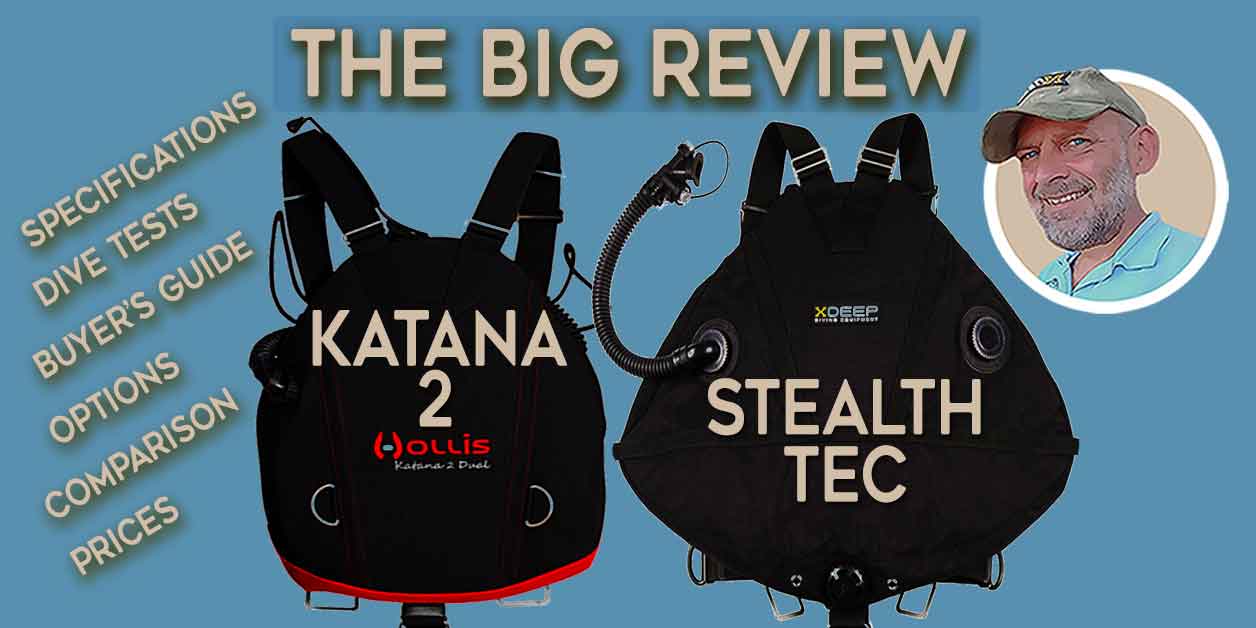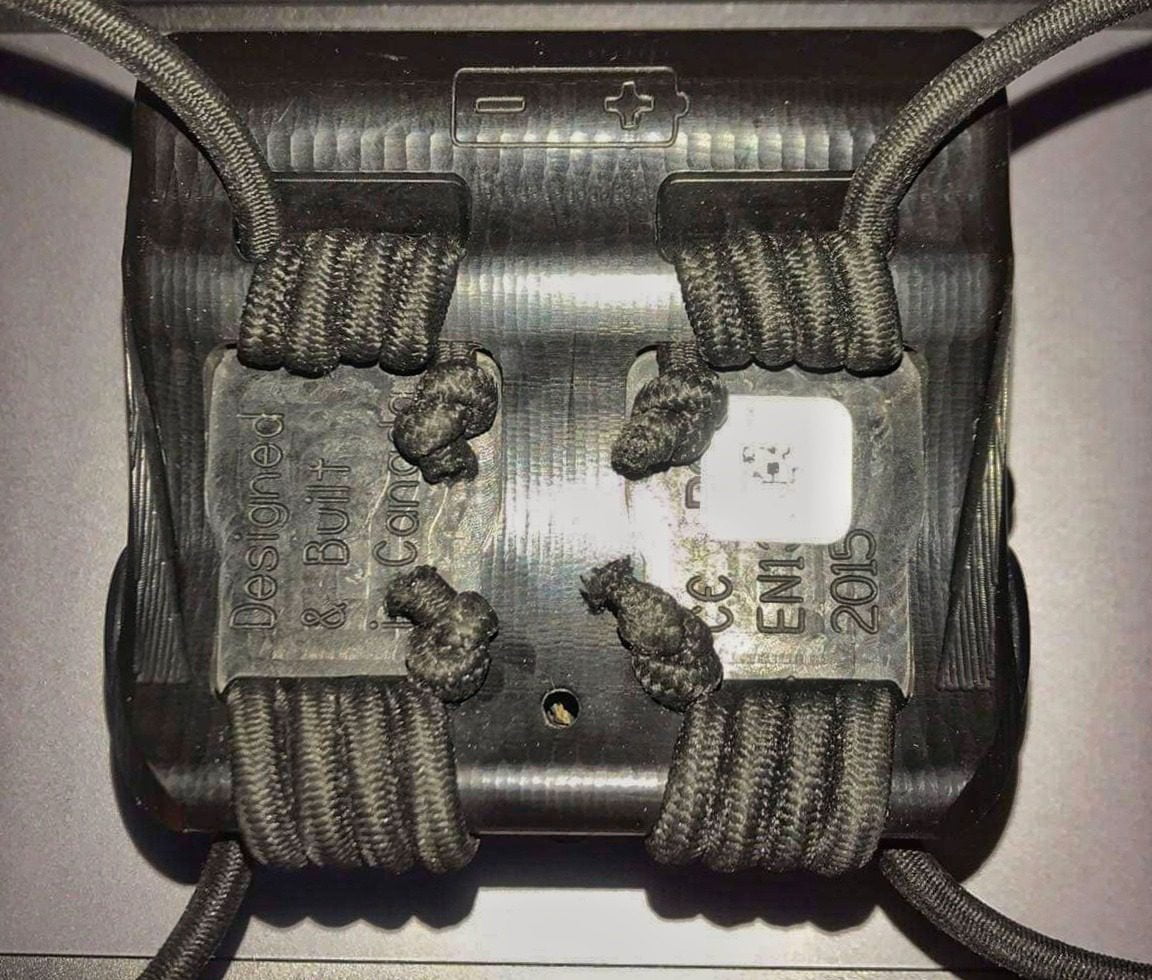CCR Review: Expert Testing the Liberty Sidemount, KISS Sidewinder & Triton
A comprehensive guest-writer review of three leading Closed Circuit Rebreather (CCR) options. Written by dive professional and technical CCR diver, Lu “Yen” Rispoli.
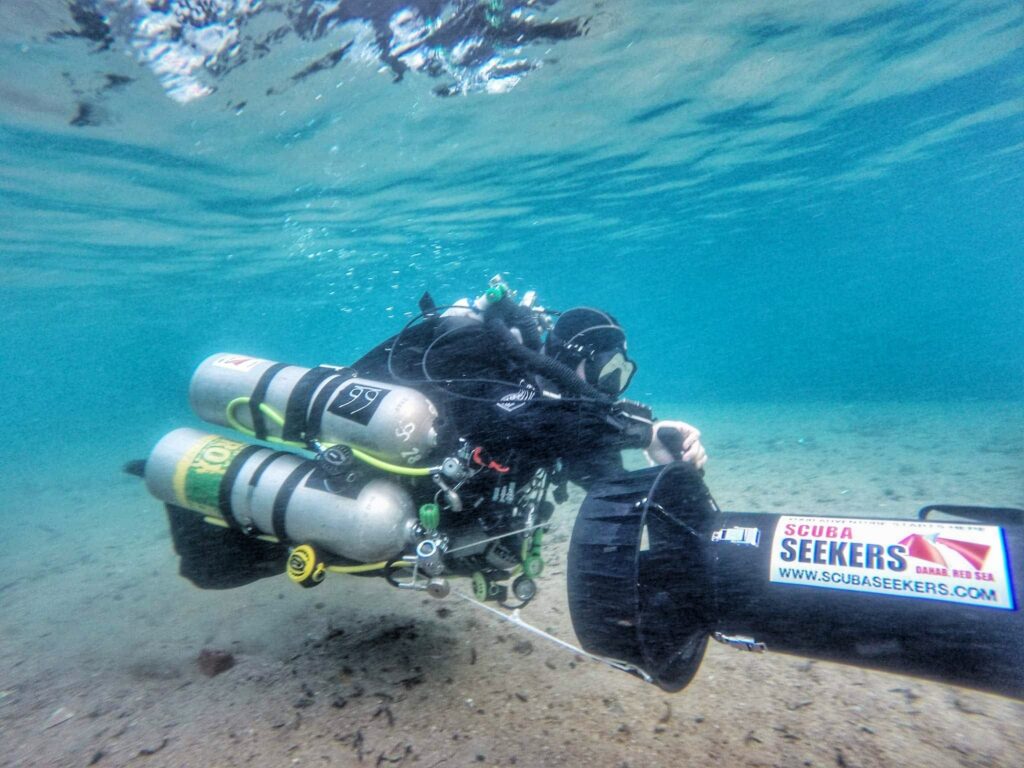
This comprehensive review offers expert user feedback from rigorous testing of three top-tier CCR units. Read on for an in-depth analysis of the performance, functionality, and distinct characteristics of each rebreather.
The CCR units tested and reviewed:
- The Liberty Sidemount:
- Designed for versatility and ease of use, the Liberty Sidemount is a favorite among technical and cave CCR divers.
- Key specifications include:
- Electronic CCR (eCCR)
- Sidemount and backmount configuration options
- Depth Range: 170m (557ft)
- Pros: Self-contained (onboard gas), cutting-edge technology, and well-engineered.
- Cons: Expensive, tricky to trim, and heavy to transport.
- The KISS Sidewinder Mk1:
- Emphasizing simplicity and reliability, the KISS Sidewinder caters to divers who prioritize ruggedness and ease of maintenance.
- Key specifications include:
- Manual CCR (mCCR)
- Sidemount and backmount configuration options
- Depth Range: 91m (300ft)
- Pros: Most streamlined, very lightweight, great work of breathing, easy to dive, and relatively economical.
- Cons: Off-board diluent cylinders, scrubbers fixed to BCD, mediocre build quality.
- The Triton:
- The Triton aims to provide divers with ease of use, light weight and a small size.
- Key specifications include:
- Manual CCR (mCCR)
- Chest-mounted configuration
- Depth Range: 100m (330ft)
- Pros: lightweight, good quality, quick assembly, bargain pre-owned units are available.
- Cons: Unit cannot be removed in water, harder work of breathing on exhalation, and offboard diluent cylinders.
Expert Testing New CCR Options
After a decade-long, love affair with my Pelagian mCCR (manual CCR), I decided to look at new options. It was time to spice things up a bit and try a few other rebreathers to see how they compared.
Of course, I still think the Pelagian CCR is an absolutely stonking unit. I’ve never before felt the need to change to a competitor.
But CCR design evolves. New, lighter-weight, units start ticking similar boxes that originally steered me toward the Pelagian. I decided to open up our relationship so to speak.
CCR Unit Requirements
1. Travel Friendly CCR
I have a non-negotiable when considering a unit: travel friendliness. I travel all over the world to dive (mostly CCR) so packing weight is an essential consideration.
In the past, that requirement immediately ruled out most production units. However, this has changed in the past few years with some new CCRs boasting single-digit (kg) packing weights.
2. CCR for Technical and Wreck Diving
I’m a firm believer in the “right tool for the job” school of thought, The CCR units I would test have to suit my diving activities:
- Long DPV scooter runs in the open ocean
- Extended range/normoxic trimix zone (MOD2 CCR)
- Moderately long decompressions (2-3.5 hours)
- Overhead dives squeezing through tight rusty restrictions.
3. Wreck Penetration and Confined Spaces
The need for a different configuration dawned on me while in Chuuk. I had a whole month to get very intimate with the wrecks once the novelty of the “tourist routes” had worn off.
Some spaces I just could not fit through with a backmount unit, no matter how nimble both myself (weighing just 64kg) and my Pelagian CCR were.
I’ve been down the route of removing a backmount unit at depth and it crosses the line between adventurous and not being the right tool.
4. Streamlined and Low-Profile CCR
Sidemount has been my main open-circuit configuration for over a decade. It’s streamlined for scootering, offers penetration opportunities that a backmount configuration doesn’t allow, and it does work very well for short or shallow penetration dives.
However, as restrictions get smaller, depths increase and runtimes double, then quadruple, accompanied by long decompression obligations, neither open-circuit or backmount CCR are any longer the right tool for the job.
So, now I needed a unit that would be:
- Lightweight
- Low-profile
- Removable underwater
- Good work of breathing (WOB)
I also like my life, so I needed a robust unit with a solid design – this will become an interesting point later on in the read.
Some of the units that seemed promising were:
- KISS Sidewinder CCR
- Flex 2 CCR
- T-Reb CCR
- Divesoft Liberty Sidemount CCR
- Triton CCR
- CHoptima CCR
- Fathom Gemini CCR
That was a long list of CCR units to test, so I increased my ideal requirements to include:
- Easy to don/doff
- Easy to assemble, take apart, and maintain.
Further narrowing it down based on track record and availability of a CCR unit to test in SE Asia, the three short-listed units I proceeded to trial were:
I figured that each is a highly popular CCR unit in it’s respective category: self-contained removable sidemount, off-board fixed sidemount, and chest mount.
I would at least get a feel for what it’s like to dive each configuration. In the end, I would buy the one that suited me best or at the very least try more units in that configuration.
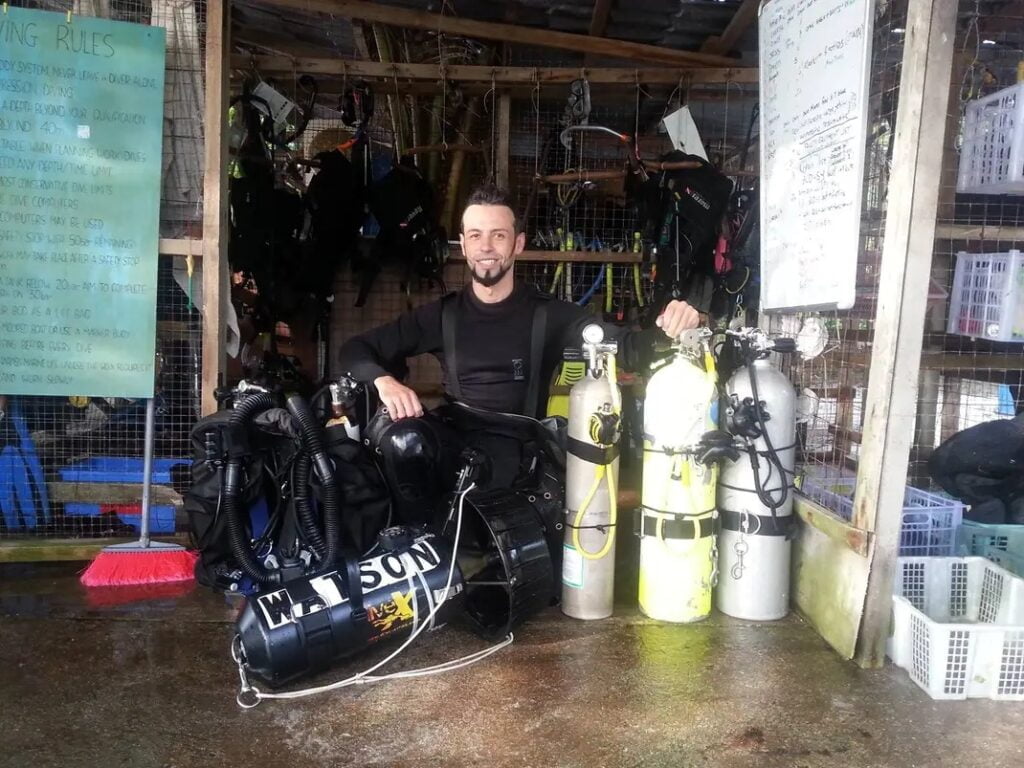
Here are my thoughts on each unit, in the order in which I tested them:
Testing the Liberty Sidemount eCCR
With a real-world packing weight of approx 23kg, including cylinders, accessories, and a prudent amount of spares, this is by far the heaviest of the bunch, with a few caveats:
- All gases are on-board
- A radial scrubber
- Modular, so for a small mortgage it can be converted to backmount.
The engineering is nothing short of arousing, if perhaps a little on the overbuilt side at the expense of added weight and bulk.
Coming from both a CCR and open-circuit sidemount background this was very easy to get used to.
Liberty CCR Work of Breathing (WOB)
The rebreather counterlungs are at the same level as the diver’s lungs in the water column; making the Liberty breathe almost as effortlessly as if you were at the surface.
However, the Liberty CCR has to be set up and trimmed 100% horizontally, and the counterlungs must stay directionally aligned with the diver’s lungs (ie: not swimming sideways).
Some seemingly minuscule adjustments such as the bottom boltsnap pointing up or down greatly influenced the CCR work of breathing. It requires some fiddling and getting used to, but luckily I had time on my side to adjust it until I got it right.
As this is the only one of the bunch that routes the loop hoses under your armpit you have to learn to “tame the snake“, as my friend and fellow Liberty diver Sameh Sokar put it.
That is, you have to twist and bind the loop hoses until they form and maintain the right shape for your torso. This is great example of how a subtle, expert, adjustment can make a world of difference.
Loop weights are recommended for making unit removal and pushing in front easier. Otherwise, the buoyant loop wants to fly out of your mouth the moment it’s no longer restrained by your armpit.
Whilst a diver is in horizontal trim, the Liberty has potentially amazing work of breathing. However, I found it very unforgiving when out-of-trim or diving in a current. The rebreather work of breathing went from zero effort to near-impossible to breathe with a slight incline of the scrubber can.
I would predict that a vertical trim descent, such as descending into an engine room from the top through a narrow conduit, being challenging, but my guess was that practice would mitigate this to some extent.
Liberty eCCR Buoyancy
The Liberty CCR is marketed as “neutrally buoyant“. This is only partly true; because as you inhale/exhale the gas moves from the unit’s counterlungs into the diver’s lungs the unit will naturally go from negative to positive. This has the effect of changing your trim with your breathing rhythm and making you bob sideways.
This effect takes some getting used to. The larger the diver, the less noticeable the effect will be. It also helps to add a lead weight to the bottom of the Liberty’s titanium plate to prevent it from getting positively buoyant.
Wreck Penetration with the Liberty CCR
For the purpose of fitting through the tightest restriction, it was the best of the bunch because it can be swung forward torpedo-style. This is much like using a regular sidemount tank while still breathing from it; because the diluent cylinder is on-board.
I would probably have preferred an encased design for the counterlungs for better protection from abrasion and puncture risks.
The only ways in which I could fault it are the overly fiddly bayonet fittings, which I found hard to operate. Especially connecting the exhale counter-lung to the head. The fittings are easily jammed with sand or silt.
Additionally, the cell tray design has no way to remove condensation from the hydrophobic membrane of the sensors mid-dive. This becomes an issue on long or repetitive dives without drying the head.
I’m personally not too bothered about the second solenoid (or any solenoid at all for that matter) and would happily trade them for a smaller and lighter head, but I do appreciate the concept.
The dual DSV MAV (Diver Supply Valve / Manual Addition Valve) design is absolutely brilliant. However, the ODA (Optical Display Adapter) is kind of “meh” as it is merely a non-configurable display. It cannot be used to control the CCR, like a Shearwater NERD has been capable of doing for over a decade.
All in all the Liberty eCCR is probably the most advanced (or over-engineered, depending on how you look at it) unit currently on the market. I really enjoyed it.
Testing the KISS Sidewinder mCCR Mk1
I was excited about trying the KISS Sidewinder as it enjoys a fervently loyal fan base; who are happy to accept its flaws and limitations.
I also really liked the idea of low packing weight for travel and the simplicity of an mCCR (manual closed circuit rebreather).
Sidewinder CCR – Ease of Don/Doff
The permanently attached scrubber canisters and having to connect the offboard diluent cylinder put it at the bottom of the bunch in the ease of donning/doffing category.
However, the scrubber canisters are not that bulky. I had the syntactic foam scrubber canisters which are fatter than the non-insulated canisters – so it wasn’t an immediate deal-breaker.
Sidewinder CCR Build Quality
However, my enthusiasm rapidly turned to disappointment when we started assembling the unit and the build quality became apparent. It’s just not very good.
Compared to the other two CCR units being tested:
- It felt plasticky in a cheap and flimsy way
- Tolerances weren’t the best
- The clips that hold the loop to the scrubber canisters looked like an accident waiting to happen
- Bayonet fittings felt tatty
- Screw-on fittings were very easy to cross-thread
- The whole thing felt wobbly and not very secure
At that point I was ready to knock it on the head before even hitting the water, but a very patient instructor talked some calm into me and I very unenthusiastically splashed.
Diving with the KISS Sidewinder mCCR
HOLY COW… it dives beautifully!
While with the Liberty CCR, or even a new wing, it takes some time to negotiate trim and buoyancy, I immediately felt I’d been diving the Sidewinder CCR for a decade.
It’s worth noting that even the XDeep Stealth Tec I was using with the Sidewinder was new to me, as I normally dive a custom-made sidemount wing I’ve had for years.
Nonetheless, I achieved perfect trim and buoyancy immediately and intuitively. I’m talking about holding depth within the inch for minutes without sculling or making any adjustments.
Sidewinder CCR Work of Breathing (WOB)
The work of breathing with the KISS Sidewinder CCR was great in ANY position, including sideways. It felt just like diving open-circuit sidemount and I almost forgot I had a loop in my mouth.
- Light
- Streamlined
- Great WOB
- Incredible!
If you’re in the camp of “function over form” you will absolutely love the Sidewinder CCR.
Managing the Sidewinder mCCR
You will also need orangutan-length arms and a disjointed shoulder to dump wing gas and reach the butt-mounted O2 cylinder.
1. Reaching the Sidemount Wing Pull-Dump
The sidemounted off-board tanks push the scrubber cannisters up the side of your torso. This made it impossible for me to reach around and find the Stealth wing pull-dump due to the added bulk behind the tanks.
2. Reaching the Butt-Mounted O2 Cylinder
The butt-mounted O2 bottle was also far out of reach for a shutdown. Those with longer arms may have better luck, but I was a good 4″ too short (and I understand this leaves me open to all manners of jokes).
This was partly mitigated by swapping the blanking plug and dump valve on the wing. I could now at least dump gas by rolling sidewise; albeit in a manner akin to Mel Gibson escaping from a straight jacket in Lethal Weapon.
Sidewinder CCR for Restrictions and Confined Spaces
Another consideration is footprint. The Sidewinder CCR could make for an outstanding open water unit on a scooter or for caves with low and wide restrictions.
However, I feel it wouldn’t be equally suited to get through hatches and small circular holes in wrecks due to the scrubber cannisters being fixed to the wing.
Bottom line is the KISS Sidewinder CCR Mk1 feels like a beta prototype of an amazing rebreather. Groundbreaking and effortless, but beta nevertheless. However, I do have high hopes for the Sidewinder Mk2 version, as the engineering is reportedly much improved and the base concept remains brilliant.
Testing the Triton mCCR
The Triton CCR looked very promising from the start:
- Tthe lightest of the lot
- Super simple and lightening-fast to assemble
- Good build quality
- Easy to remove in-water.
What more could I want?
It’s also a relatively inexpensive unit to buy, I’ve seen some barely used ones go for €4500.
The assembly was so fast and simple that I almost can’t remember it. Then four clips for the bag and a click for the diluent cylinder. Bish, bosh… done.
Chest-Mounted Rebreather Unfamiliarity
It was a bit weird having something on my chest at first as unlike with back mount and sidemount where things are largely out of the way, you know the Triton is there.
Triton Streamlining and Profile
While the Triton CCR does make a diver considerably thicker in profile, it’s meant to unclip at the bottom and partially remove to push through a restriction.
Although I didn’t feel quite ready to try that on a first dive. You also still have your offboard gas cylinders increasing your width.
Triton CCR Work of Breathing (WOB)
Unfortunately, the Triton CCR romance ended within 20 minutes with me bailing out and cutting the dive short.
For some reason, I just couldn’t “get it“.
I was prepared for a slightly harder exhalation due to the position of the counter-lungs, but what I got went well beyond hamster cheeks.
The CCR loop felt like it wanted to explosively eject out of my mouth and the Automatic Diluent Valve (ADV) kept firing at the end of inhalation.
I tried to negotiate with the machine so it would let me have some mercy breaths by offering all angles of trim but it wasn’t meant to be. This demanded an uncomfortable head-down trim that my neck would never tolerate for more than half a minute.
However, it did seem to ease the work of breathing slightly. After playing around with placement up and down my chest I called it a day and surfaced with a headache.
So is the Triton mCCR a bad unit?
I really don’t think so.
In fact I’m so convinced it was a combination of a configuration new to me and perhaps a slightly imperfect placement of the unit.
Additionally, as with the Liberty CCR, it is necessary to acclimatize to the way it breathes. I would go back to the pool and get someone to make subtle adjustments until it sits right.
What I experienced was so far out of normal CCR work of breathing parameters that I feel there is no way the Triton would obtain CE certification. I do think it’s a unit that takes a little more time and fiddling to get just right than a quick try dive affords.
So there is no verdict on this one, but I’ll report back once I’ve had a chance to spend an adequate amount of time on it.
So which CCR did I end up buying?
It’s probably easy to guess – the Liberty Sidemount CCR.
The ability to treat the Liberty like a sidemount tank – clip on, stick the DSV (Diver Supply Valve) in my mouth and go diving – is too seductive to pass, all other things being equal.
Then add in effortless work of breathing, the ability to fully remove and push in front, and the convenience of the MAVs, the Liberty CCR in sidemount configuration comes well ahead of the others.
Yes it is heavier – a lot heavier – for travel, but in the water the Liberty is actually more streamlined as all your gases are onboard.
Is the Liberty CCR perfect? Absolutely not.
- It could be smaller and lighter.
- It is not modular enough; if you swap from CCR to open circuit you can’t take the dive computers off.
- The sensor holder is a poor design
- They reinvented the wheel with those over-engineered fittings
- It has way more components than I would like; more failure points that can break and consequentially need repairing at no small cost.
But it ticks enough boxes for me to want to use it for the wreck penetration diving I enjoy.
Plus – and this is a big plus for me – Liberty actually listen to their user base and constantly provide new updates and improved parts.
For instance, the design of the MAV internals was changed. Pre-2022 units had an o-ring that was prone to shredding and cause O2 to leak into the loop, as mine did.
To fix this, Liberty published an array of freely downloadable .stl files to print accessories; including a redesigned Optical Display Adapter (ODA) mount as users complained about the original one.
That said, who knows what newer and better hose-wielding devilry will come out next year…
Moving Forward as a CCR Diver
For now, I’m enjoying getting acquainted with my Liberty, discovering subtle new nuances every time I dive it.
The visual display, which although very different from a Shearwater, offers more customization and different features. My favorite features are the TTS screen, ludicrously long scrubber duration, and learning to live with a solenoid (or two) – although my first instinct is still to dive it manually!
I have tested the scrubber to breakthrough; spending hours just below the surface in a pool; far beyond Liberty’s “suggested” scrubber duration. I eventually gave up after 11 hours… and the CCR was still breathing fine!
About the Author
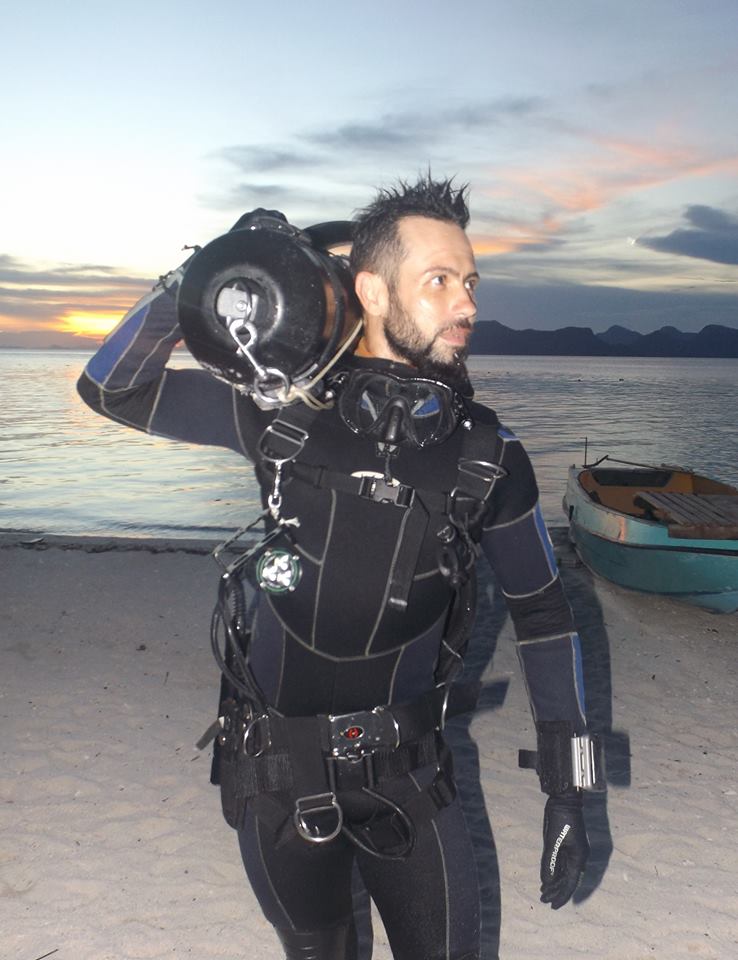
Lu “Yen” Rispoli is a Technical Sidemount, Wreck, Trimix & CCR diver based between the UK and Bali with over 2000 decompression dives on 5 continents.
Yen blew his first bubbles in a pool in London nearly 20 years ago.
The same month he left his apartment, sold most of his possessions, and moved to South East Asia to pursue a professional diving career.
His current diving configuration of choice is the Liberty Sidemount CCR and a DPV scooter; and his favorite dive destination is Chuuk Lagoon, where he spends a month each year fueling his wreck diving addiction.
Rebreather Diving FAQs
CCR stands for Closed Circuit Rebreather. This is scuba diving equipment that recycles the diver’s inert gas supply, adds oxygen and removes CO2.
mCCR stands for Manual or Mechanical Closed Circuit Rebreather. O2 delivery is manually or mechanically controlled by the diver.
eCCR stands for Electronic Closed-Circuit Rebreather. O2 delivery is automatically controlled by a computer, based upon sensor readings in the loop.
A Closed Circuit Rebreather (CCR) works by recycling inert gasses in the diver’s exhaled breath, removing carbon dioxide, and replenishing oxygen at a desired partial pressure.
A SCR (Semi-Closed Rebreather) delivers a constant flow of O2 based on the diver’s metabolic demand. Whereas a CCR (Closed-Circuit Rebreather) adds a measured amount of O2 to maintain a measured partial pressure (ppO2).
Sidemount rebreathers are worn alongside the diver’s torso, offering a very streamlined profile compared to traditional backmount CCR designs.
A chest-mounted CCR has the rebreather unit mounted on the diver’s chest.



